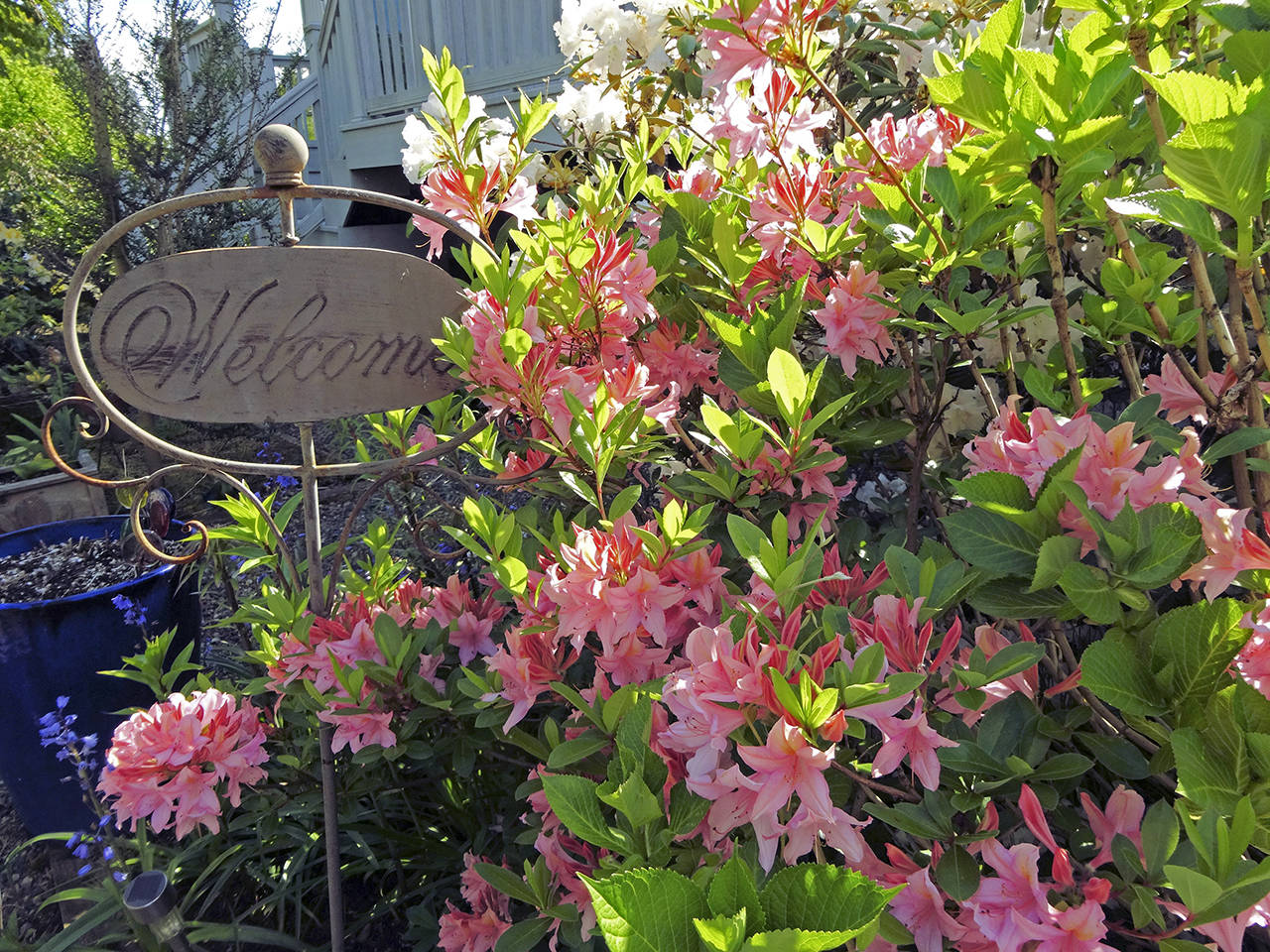By Mary Shane
WSU Master Gardener
In my garden, nothing much gets planted in the fall or winter besides spring-flowering bulbs. I spend my time instead dreaming of warmer days as I pore through the seed and plant catalogs that will be arriving soon.
But there are many gardening tasks that I can — or should — tackle this time of year. Here are just a few:
Pruning
From now through mid-February, prune those fruit trees. The goal to strive for is a tree that it is open to the light, and easy to care for and harvest.
With spring-blooming ornamental trees and shrubs, wait to prune until after they have bloomed. A pruning this time of year will lop off all the flower buds that are waiting to open in spring or early summer.
For non-spring blooming ornamental trees, such as a Japanese maple, prune during the winter — after the leaves have fallen — because you will be able to see the structure of the tree.
Planting and digging bulbs
Even in December, it is not too late to plant spring-blooming bulbs such as tulips and daffodils. Remember that most daffodils will bloom for one year, but only the Darwin Hybrid tulips will rebloom. This variety, sometimes called “perennial tulips,” can continue to flower annually for as long as ten seasons.
If you have elected to overwinter bulbs and tubers such as dahlias, begonias or cannas in the ground, cut the stalks below ground level and cover with mulch. Be sure you have good drainage. If not, your tubers may rot.
Mulching
Fallen leaves from healthy trees make great winter mulches. One idea is to shred them with a lawnmower to ensure the leaves will be sufficiently chopped up. Otherwise, the rains may cause them to mat together and form a barrier that blocks water and oxygen movement into the soil. Do not mulch leaves that have diseases or insect problems.
The chopped-up leaves are a great mulch for your vegetable garden and to spread on top of the canna, dahlia or begonia bulbs you have cut back.
Tending the vegetable garden
Now is a good time to be ruthless with any sign of serious disease. If you haven’t already disposed of the summer growing fruits and vegetables — tomatoes, peppers, cukes, squash, bush beans — do so now, because they may harbor a host of fungi if left to overwinter.
Shut down irrigation
I use drip irrigation for my vegetable garden. A late fall or winter chore is to pull all the drip lines up from the beds, laying them parallel to the fence between my house and the neighbors’. This will allow me to easily work on the vegetable garden beds in late winter or early spring.
To keep our garden hoses leak-free from year to year, the hose faucets are for the most part turned off, and all the garden hoses are stretched out to drain. Once drained, they are curled up out of the way till spring. We do leave one faucet on with a hose attached to clean bird droppings from our back deck.
Planting ornamentals
October through March is a great time to slip ornamental trees and shrubs into their new planting spots. This gives them the rainy season to establish a strong root system. Dig the hole three to five times as wide as the root ball, but only as deep as the height of the root ball. Backfill the hole with non-amended native soil.
Selecting seeds
The best winter task is to leaf through all the seed and plant catalogs that have come in the mail, marking the pages where you find flowers, fruits and vegetables to order for the 2020 growing year.
Clean out your seed-storage container, discarding those seeds that will have limited germination in 2020. Most seed packets will have a “use by” date to help you identify which ones need to be tossed. Just think — more seeds to look for in the catalog or online.
Winter is a wonderfully restorative time of the year. With these few tasks to take you into your garden, you will reap the benefits come spring and summer.
Mary Shane finished WSU Master Gardener training in 1998. She gardens on a third of an acre overlooking the Sylvia Creek Valley.


